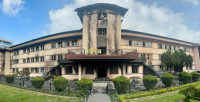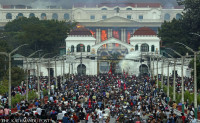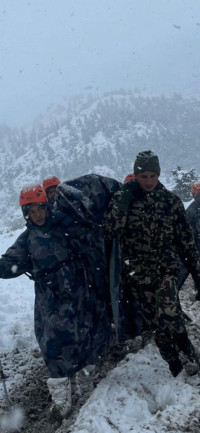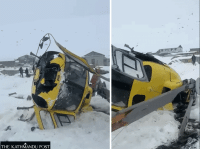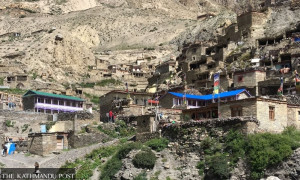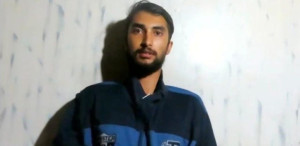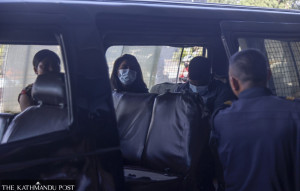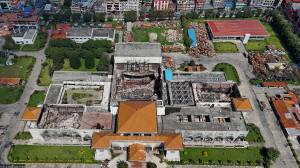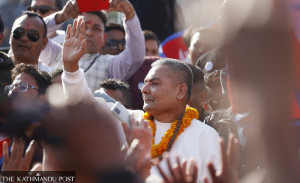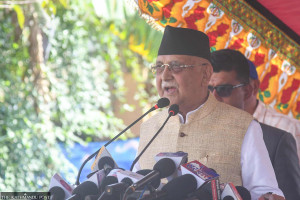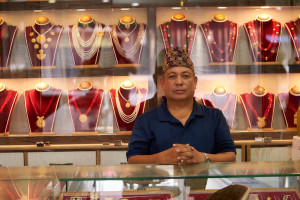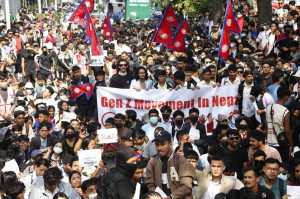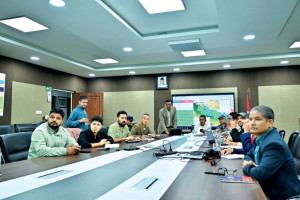National
Seventh round of Nepal-India boundary talks begin in Delhi
The BWG is tasked with construction, restoration, and repair of boundary pillars, clearing the no-man’s land, and other technical tasks, excluding the disputed areas of Susta and Kalapani.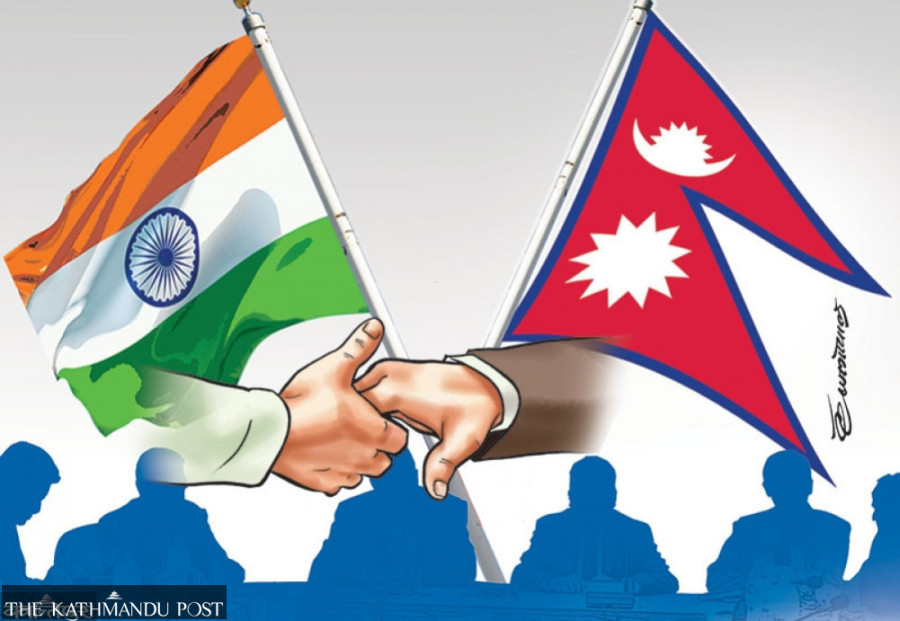
Post Report
The seventh meeting of the boundary working group between Nepal and India began in New Delhi on Monday.
Prakash Joshi, director general at the Department of Survey is leading the Nepali delegation while Hitesh Kumar S Makwana, Surveyor General, is leading the Indian delegation in the meeting.
“Since the meeting is taking place after six years, we reviewed the past progress and assessed the remaining work as entrusted in the terms of reference,” a Nepali participant said.
The BWG is tasked with construction, restoration, and repair of boundary pillars, clearing the no-man’s land, and other technical tasks, excluding the disputed areas of Susta and Kalapani.
In 2014, during the Nepal visit of Indian Prime Minister Narendra Modi, the two sides had agreed to form the BWG and that the boundary dispute in Susta and Kalapani would be addressed by foreign secretaries of Nepal and India with the help of the BWG.
The meeting, which will conclude Tuesday, is expected to come up with a future roadmap to complete the task assigned by the two sides in 2014.
Earlier, in the fifth meeting of the boundary working group in 2018, a four-year timeline had been set to complete the bilateral boundary work by 2022. Due to the Covid pandemic and the map dispute between Nepal and India after 2019-20, the BWG could not meet its deadline.
“We are trying to forge a similar kind of consensus which we reached in 2018,” the Nepali participant said.
The BWG meeting has to prepare a blueprint to complete the remaining boundary work, compile data on properties held by citizens on either side of the border, install and repair 8,554 boundary pillars, install GPS facilities, and resolve the boundary disputes in areas where rivers have changed course.
Other participants in the meeting include representatives from foreign, home, defence, law, and land management ministries, along with some experts and representatives from the Armed Police Force.
“Though we are in the midst of the meeting, on the first day, we reviewed progress made since the last meeting and discussed the possible resumption of field work, boundary inspection, maintenance and repair of boundary pillars, and installation of new pillars as per the terms of reference of the BWG,” the participant added.
The BWG is the continuation of another mechanism, the Nepal-India Joint Technical Committee formed in 1981, which made significant progress in scientifically mapping the Nepal-India border. In 2007, the committee produced 182 sheets of boundary maps using GPS, excluding the disputed areas of Susta in Nawalparasi West and Kalapani in Darchula. After its mandate ended in 2007, the BWG was established in 2014 to take over technical responsibilities.
Over the past six years, the Armed Police Force of Nepal and India’s Sashastra Seema Bal have carried out temporary maintenance of boundary pillars.
Data from Nepal’s Department of Survey shows that 8,554 boundary pillars have been installed along the border. Of these, 1,325 are missing and 1,956 are either partially or fully damaged.
Under the BWG, two supporting mechanisms—the Survey Officials’ Committee and the Joint Field Survey Teams—provide technical inputs and are mobilised on the ground.




 19.12°C Kathmandu
19.12°C Kathmandu